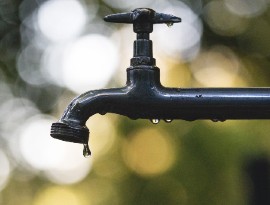
The Dr Kenneth Kaunda District Municipality (DRKKDM) consists of three local municipalities namely: - Matlosana NW 405, Tlokwe – Ventersdorp and Maquassi Hills, the background analyses are based upon demarcation of 2015 when Tlokwe and Ventersdorp were amalgamated.

Get insights on Who We are, Our Vision, Mission and what drives The Dr. Kenneth Kaunda District Municipality.

Get to know our Council Structure, Members, Wards and Committee’s.

Get information of available Internships, Learnerships and Application Forms.

Learn about your Rates and Taxes, Environment and other related Services.
The Dr. Kenneth Kaunda District Municipality has a total population of 186 947, making it the municipality with the smallest population in Bojanala District Municipality. It is highly rural, with 88% of the population residing in traditional areas, about 7,4% residing in urban areas, and about 3% residing on smallholdings. Black Africans constitute 99,4% of the Dr. Kenneth Kaunda District Municipality’s population. The most commonly spoken or dominating language is Setwana.
More than half of the population (51%) is female At age 85 and older, there were more than twice as many women as men. People under 15 years of age made up over a quarter of the population (30,9%), people aged between 15 and 64 constitute more than half of the population (60,9%), and people aged 65 and older made up 8,2% of the population.
The Dr. Kenneth Kaunda District Municipality has a relatively township population, with more than 88% of the population located in township areas. There are about 52 063 households the district with an average household size of 3,6. More than 80% of the population lives informal dwellings and about 15% of households occupy informal dwellings.
More than 70% of the households have access to water. However, of serious concern is the fact that close to 6 000 households have no access to water. The provision of sanitation facilities across the municipal communities remains one of the key challenges for the municipality.
The spatial development framework of the municipality is shaped by the rich agricultural history characterizing large pieces of land in the area. It is against this backdrop that agriculture has become a focal point in all economic development prospects for the municipality constituency.
African Agribusiness is transforming into a regional and global market from its early rooted local trade history. This growth makes this sector increasingly interesting to investors, governments and the world at large. Moretele is a municipality with agricultural growth potential, with over 10 000 agricultural households.
As the global population grows and a shortage of food becomes a reality, Africa has the potential to become the breadbasket of the world. According to WEF, growth in agriculture is 11 times better at reducing poverty than growth in other sectors. With 65 per cent of Africa’s population already working in farming, investment in agriculture will benefit more of the continent’s people.